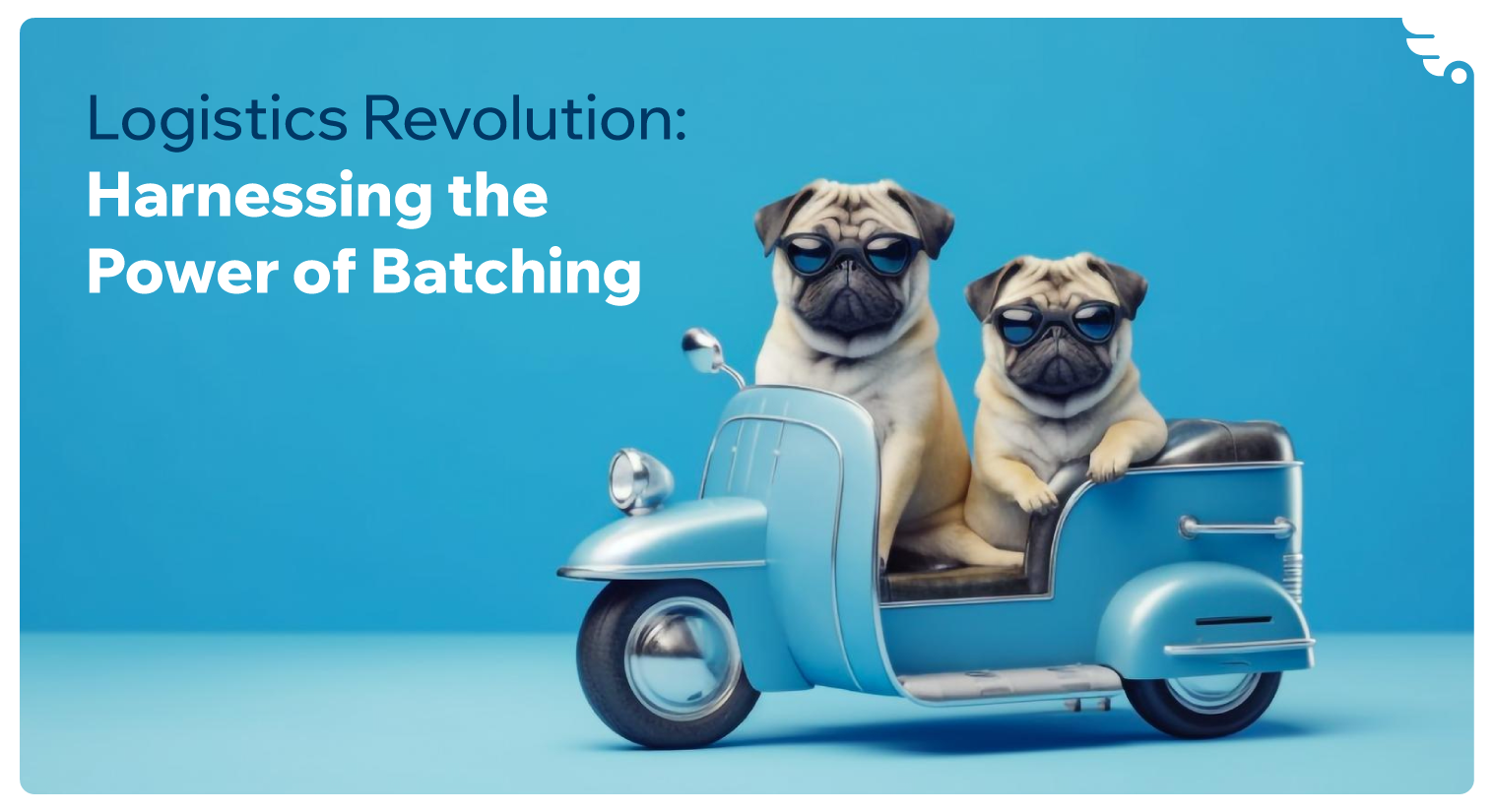Carbon Crusaders: How Last Mile Logistics Software Is Changing the Game

So, what precisely is a carbon footprint? As defined by Mike Berners-Lee, a professor at Lancaster University in the UK and the author of The Carbon Footprint of Everything, it encompasses "the total of all the greenhouse gas emissions required for a product to be manufactured or for an activity to occur."
In advanced economies, individual carbon footprints typically stem from four primary categories: residential energy consumption, food, miscellaneous items (which encompass a range of goods from utensils and clothing to vehicles and television sets), and transportation.
The good news is, with the right technology, we can make a positive impact on the environment. Here's how last-mile logistics software can significantly influence carbon footprint reduction in several ways:  Route Optimization plays a pivotal role in modern logistics operations. Utilizing sophisticated algorithms, advanced logistics software meticulously analyzes various factors such as traffic patterns, delivery schedules, and location-specific data. This thorough examination allows companies to meticulously select the most efficient routes for their deliveries. By doing so, unnecessary detours are significantly reduced, ultimately leading to a notable decrease in the overall distance traveled. This meticulous approach not only enhances operational efficiency but also contributes significantly to emission reduction, aligning businesses with sustainable practices.
Route Optimization plays a pivotal role in modern logistics operations. Utilizing sophisticated algorithms, advanced logistics software meticulously analyzes various factors such as traffic patterns, delivery schedules, and location-specific data. This thorough examination allows companies to meticulously select the most efficient routes for their deliveries. By doing so, unnecessary detours are significantly reduced, ultimately leading to a notable decrease in the overall distance traveled. This meticulous approach not only enhances operational efficiency but also contributes significantly to emission reduction, aligning businesses with sustainable practices.
 Vehicle Selection and Load Efficiency is a critical aspect of modern logistics management. The advanced logistics software employs a comprehensive analysis of various parameters, including package dimensions, weight, and delivery schedules, to precisely determine the most suitable vehicles for each specific delivery. By doing so, the system ensures that vehicles are neither oversized nor underutilized, optimizing load capacity to its fullest potential. This meticulous approach not only minimizes the need for multiple trips but also leads to a substantial reduction in emissions, making a significant contribution to sustainable and eco-conscious logistics practices.
Vehicle Selection and Load Efficiency is a critical aspect of modern logistics management. The advanced logistics software employs a comprehensive analysis of various parameters, including package dimensions, weight, and delivery schedules, to precisely determine the most suitable vehicles for each specific delivery. By doing so, the system ensures that vehicles are neither oversized nor underutilized, optimizing load capacity to its fullest potential. This meticulous approach not only minimizes the need for multiple trips but also leads to a substantial reduction in emissions, making a significant contribution to sustainable and eco-conscious logistics practices.
 By leveraging the precision of GPS technology and integrating real-time tracking features, companies gain unprecedented visibility into their fleet's movements. This granular level of oversight empowers them to respond swiftly to unforeseen circumstances, such as unexpected delays or route diversions. Through timely interventions, companies not only bolster operational efficiency but also ensure that customer expectations are met with utmost precision and reliability. This level of real-time control is instrumental in maintaining a seamless and highly responsive logistics operation and consequently to reduce the carbon footprint.
By leveraging the precision of GPS technology and integrating real-time tracking features, companies gain unprecedented visibility into their fleet's movements. This granular level of oversight empowers them to respond swiftly to unforeseen circumstances, such as unexpected delays or route diversions. Through timely interventions, companies not only bolster operational efficiency but also ensure that customer expectations are met with utmost precision and reliability. This level of real-time control is instrumental in maintaining a seamless and highly responsive logistics operation and consequently to reduce the carbon footprint.
 Delivery Window Management is a strategic tool within logistics software that revolutionizes the customer experience. This feature empowers companies to provide customers with tailored delivery timeframes, accommodating their preferences and schedules. By offering this flexibility, companies can strategically consolidate deliveries based on geographical proximity and time slots. This optimized approach enables more efficient route planning, effectively reducing the number of trips required for fulfillment. As a result, emissions are significantly minimized, aligning with eco-conscious practices and contributing to a more sustainable supply chain ecosystem.
Delivery Window Management is a strategic tool within logistics software that revolutionizes the customer experience. This feature empowers companies to provide customers with tailored delivery timeframes, accommodating their preferences and schedules. By offering this flexibility, companies can strategically consolidate deliveries based on geographical proximity and time slots. This optimized approach enables more efficient route planning, effectively reducing the number of trips required for fulfillment. As a result, emissions are significantly minimized, aligning with eco-conscious practices and contributing to a more sustainable supply chain ecosystem.
 Logistics software provides valuable data analytics, allowing companies to assess their performance and identify areas for improvement. By analyzing this data, businesses can implement strategies to further optimize their operations and reduce emissions.
Logistics software provides valuable data analytics, allowing companies to assess their performance and identify areas for improvement. By analyzing this data, businesses can implement strategies to further optimize their operations and reduce emissions.
 Many last-mile logistics software solutions come equipped with reporting features that track emissions generated during deliveries. This data can be used to set emission reduction goals and hold companies accountable for their environmental impact.
Many last-mile logistics software solutions come equipped with reporting features that track emissions generated during deliveries. This data can be used to set emission reduction goals and hold companies accountable for their environmental impact.
By harnessing the power of advanced last-mile logistics software, companies can make substantial strides towards reducing their carbon footprint.
We at VanOnGo know how to do this, because we implement the above-mentioned approaches.
These solutions not only benefit the environment but also lead to cost savings and improved customer satisfaction. It's a win-win for businesses, consumers, and the planet.
Embracing green logistics practices is not just an option; it's an imperative for a sustainable future.
If you want to learn more about how VanOnGo can help your business address the latest trends and expectations in the last-mile delivery space, sign up for our services today and receive software without any integration fee.

